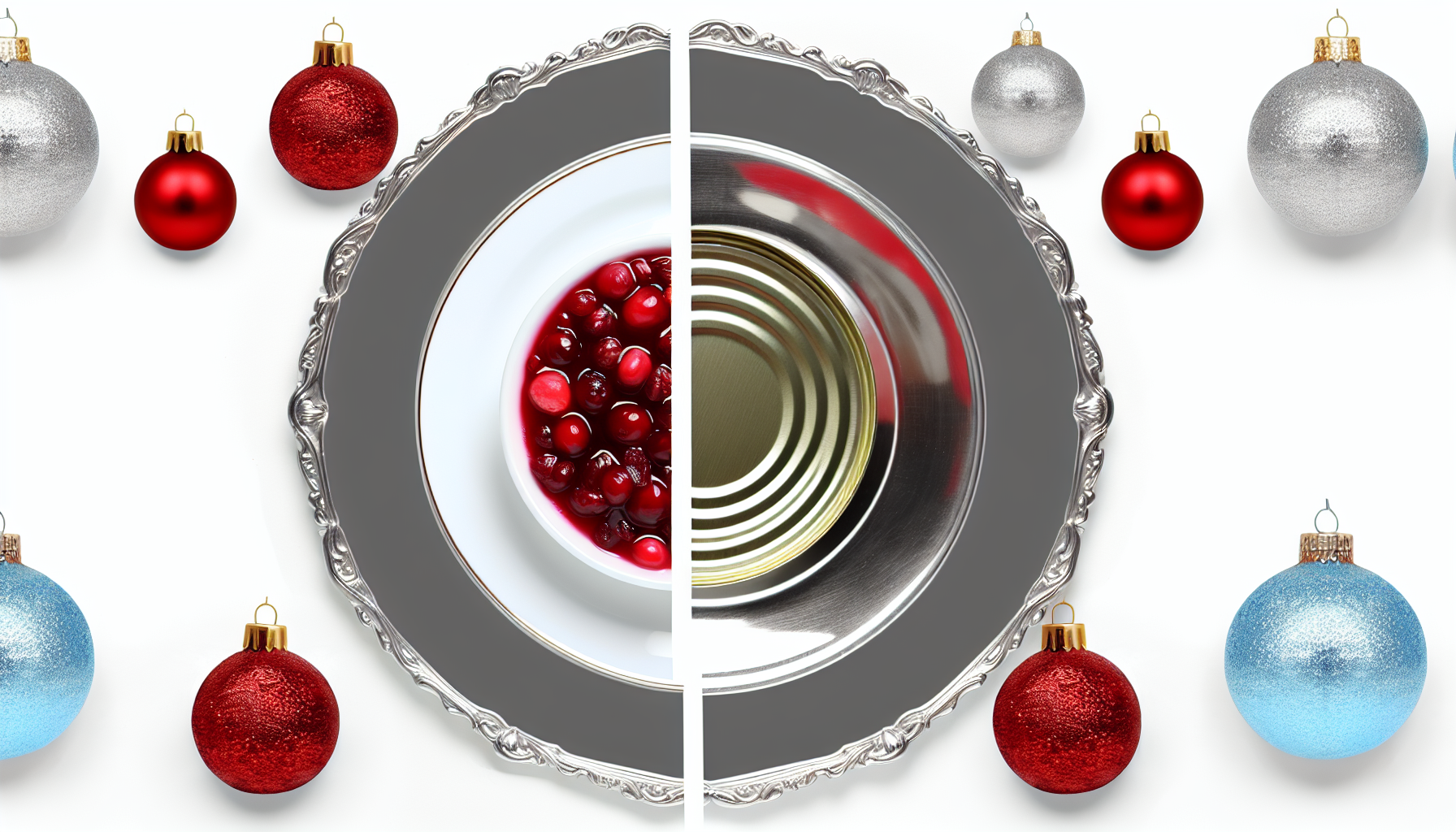Cranberry Sauce: Canned vs. Fresh

Cranberry sauce is a delightful addition to many meals, especially when it comes to festive gatherings. It's a tradition for many families, and its sweet and tangy flavor can really make a dish stand out. In this article, we will explore the world of cranberry sauce and look at the differences between canned and fresh options. By the end of this read, you'll have a better understanding of which type might be best for your next meal or celebration.
The History of Cranberry Sauce
The journey of cranberry sauce from bog to table is an interesting one. Originating from the Native Americans, cranberries were not only a food source but also a symbol of peace. It's believed that cranberries, in the form of pemmican—a mixture of berries, fat, and dried meat—were shared with the Pilgrims, leading to the incorporation of cranberry sauce in Thanksgiving traditions.
- Cranberries were used by Native Americans for food, dye, and healing.
- It is thought that cranberries were introduced to the Pilgrims by Native Americans, becoming a regular part at Thanksgiving.
- Over time, cranberry sauce evolved from a simple sugar and water reduction to the more complex recipes we enjoy today.
For a deeper understanding of this evolution, you can look at historical texts or credible food history sources that document the transformation of cranberry sauce through the ages. From its humble beginnings to its present-day status as a holiday essential, cranberry sauce has certainly earned its place at the table.
Canned Cranberry Sauce: What You Need to Know
When you think of cranberry sauce, the image that often comes to mind is the jellied, cylindrical shape that slides out of a can. Canned cranberry sauce is a popular choice for many, especially during the holiday season. But what exactly is it, and what should you know about it?
- Preparation: Canned cranberry sauce is made by cooking cranberries until they break down into a sauce, which is then sweetened and jelled before being canned.
- Convenience: The main draw of canned sauce is its convenience. It's ready to eat straight from the can and requires no additional preparation.
- Shelf Life: Canned cranberry sauce can last for years on the shelf, thanks to the canning process that preserves the sauce.
For those concerned about nutrition, it's good to know that canned foods can still offer nutritional value. However, it's important to check the label for added sugars and preservatives. Some studies, such as those from the National Center for Biotechnology Information, suggest that while canned foods may have a slightly different nutrient taste than their fresh counterparts, they are still a valuable part of a balanced diet.
Fresh Cranberry Sauce: A Step-by-Step Guide
Making your own cranberry sauce with fresh cranberries is a simple process that can bring a personal touch to your meals. Here's a basic recipe to begin:
- Ingredients: You will need fresh cranberries, sugar, and water. Optional ingredients for extra flavor could include orange zest, cinnamon, or nutmeg.
- Cooking: See this post on ways to cook your cranberry sause - sous vide or stove top!
- Cooling: Remove from heat and let it cool. The sauce will continue to thicken as it cools.
Using fresh ingredients not only gives you control over what goes into your sauce but also offers the benefits of fresh produce. Experts, like those at the Harvard T.H. Chan School of Public Health, emphasize the importance of fresh fruits in a healthy diet for their vitamins, minerals, and antioxidants.
Taste and Nutritional Comparison: Canned vs. Fresh Cranberry Sauce
When it comes to choosing between canned and fresh cranberry sauce, taste and nutrition are often key factors. Let's break down the differences:
- Taste: Fresh cranberry sauce typically has a brighter, more tart flavor taste, while canned sauce is often sweeter and has a more uniform texture.
- Nutritional Content: Fresh cranberries are packed with vitamins, fiber, and antioxidants. Canned sauce may contain added sugars and preservatives, which can affect its nutritional value.
For a more detailed comparison, consult authoritative nutrition databases or look for taste tests and surveys that offer insights into preferences and health benefits.
Shelf Life and Storage: Fresh vs. Canned
The shelf life and storage needs of cranberry sauce can affect your choice:
- Shelf Life: Canned cranberry sauce can last for years when unopened, thanks to the canning process. Fresh cranberry sauce, on the other hand, is best enjoyed within a week of making it.
- Storage: Keep canned sauce in a cool, dry place. Store fresh sauce in the refrigerator, and for longer storage, consider freezing it.
Always reference food safety resources for the best practices in storing cranberry sauces to ensure quality and safety.
The Environmental Impact: Canned and Fresh Options
When considering the environmental impact of your cranberry sauce choice, here are some points to consider:
- Canned sauce may have a higher environmental impact due to the resources used in manufacturing and recycling the cans.
- Fresh cranberries may have a lower environmental impact, especially if sourced locally and seasonally.
Look into environmental studies or articles that discuss the production impact of canned and fresh foods for more information.
Making the Choice: When to Use Canned or Fresh Cranberry Sauce
Depending on the occasion, you might prefer one type of cranberry sauce over the other:
- Canned: Convenient for quick meals and when out of season.
- Fresh: Ideal for special occasions and when you want to impress with homemade flavors.
For recommendations on when to use canned or fresh, consult culinary experts or event planning resources.
Looking to perfect your homemade cranberry sauce recipe? Consider these sous vide cookers and this recipe for the best results.
